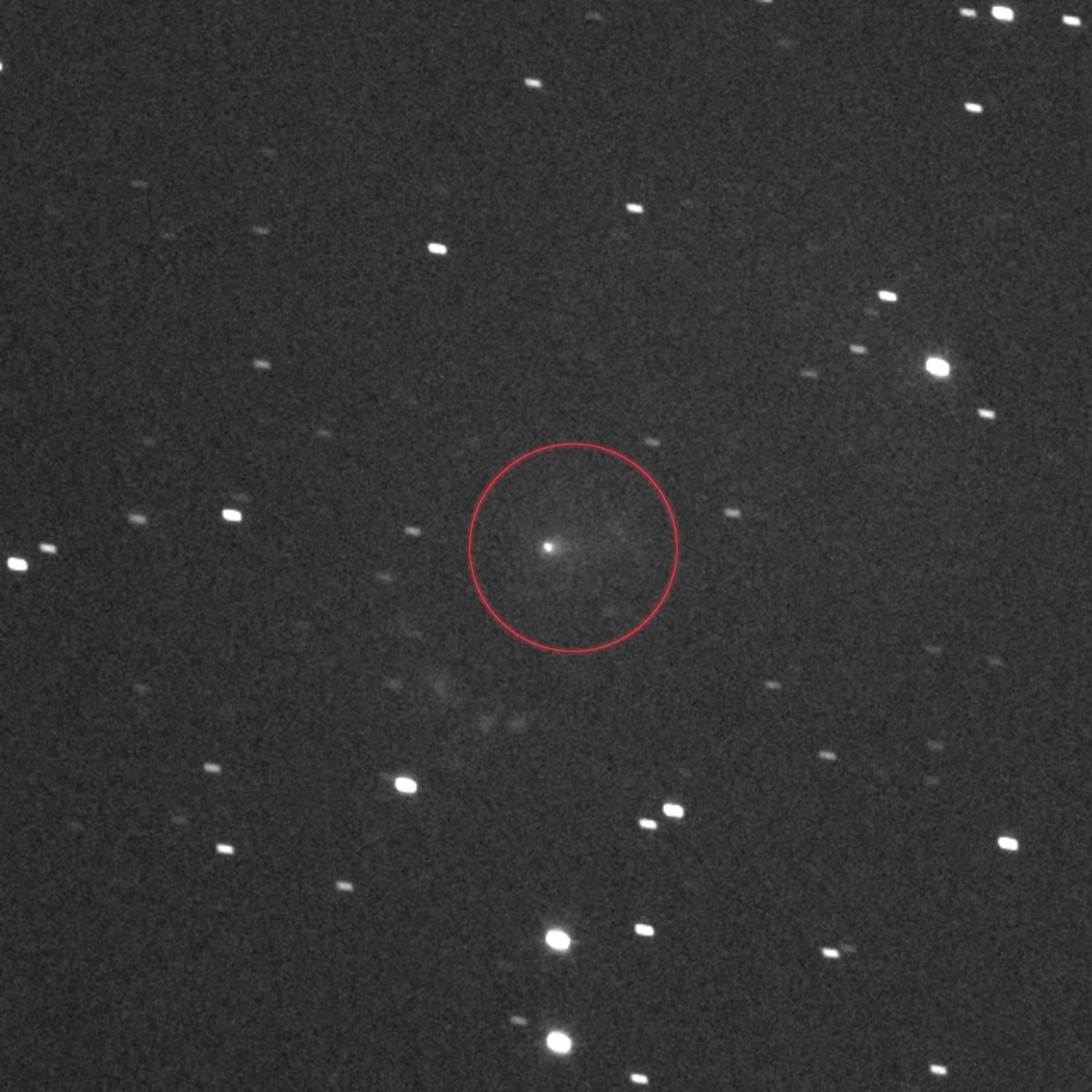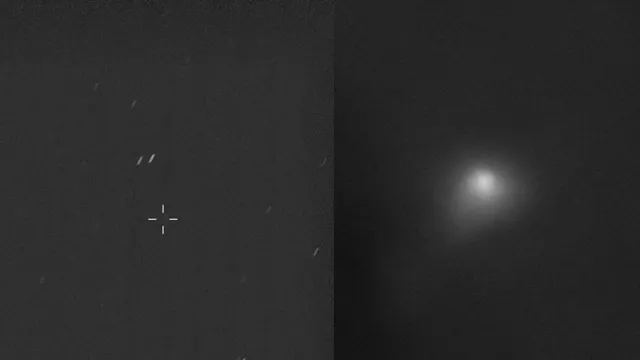- By Shivangi Sharma
- Thu, 20 Nov 2025 11:43 AM (IST)
- Source:JND
NASA on Wednesday released long-awaited images of interstellar object 3I/ATLAS, following delays triggered by the US government shutdown. The agency’s press conference, intended to offer clarity on the Manhattan-sized comet that has captured global attention, instead sparked fresh criticism, both from scientists and the public, over the quality and clarity of the visuals presented.
Amit Kshatriya, NASA associate administrator, opened the briefing by directly addressing growing speculation surrounding the object. “This object is a comet. It looks and behaves like a comet,” he emphasized.
The newly released images were captured by multiple NASA spacecraft from September to mid-October, depicting 3I/ATLAS as a glowing orb surrounded by a faint halo of gas and dust, hurtling through space, roughly 190 million miles from Earth, travelling at an extraordinary 153,000 mph, according to the New York Post.
Tom Statler, NASA’s lead scientist for solar system small bodies, compared the observation challenge to watching a baseball game from scattered seats in a stadium: “Nobody has a perfect view, and everybody has a different camera.”

ALSO READ: ‘From Red Fort to Kashmir’: Pakistan Leader Publicly Admits Role In Terror Attacks Across India
HiRISE Image Sparks Backlash
High expectations had been placed on the HiRISE camera aboard the Mars Reconnaissance Orbiter, which had the closest vantage point at just 19 million miles. However, the image shown was blurry, grainy, and lacked definition, disappointing both researchers and space enthusiasts.
Ironically, NASA’s clearest image of the day wasn’t of the comet itself, but a colour visualisation of the chemical elements being released by 3I/ATLAS.
Avi Loeb: “Nothing New Was Revealed”
Harvard astrophysicist Avi Loeb, a central figure in the debate over 3I/ATLAS’s origins, appeared on NewsNation moments after the NASA briefing. Loeb did not hold back: “There were no new insights… They repeated things we already knew.” Loeb has frequently challenged NASA over the object’s nature, suggesting that more rigorous investigation is needed to determine whether its behaviour is truly comet-like.
Internet Reacts: “Is That the Best NASA Can Show?”
Social media users expressed frustration that the images looked “blurred,” “pixelated,” and “underwhelming,” especially after weeks of anticipation. Many questioned why, with so many assets observing the object, none produced a sharp visual.
What We Know So Far
3I/ATLAS will make its closest approach to Earth on December 19, 2025.
It has been moving through the inner solar system since July 2025.
The comet is estimated to be 5–8 billion years old, older than Earth itself, according to US Congressman George Whitesides.
NASA deployed 12 spacecraft and telescopes in a coordinated observation campaign.

